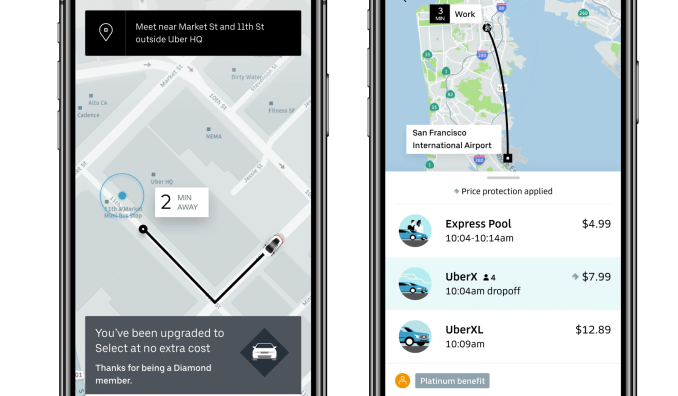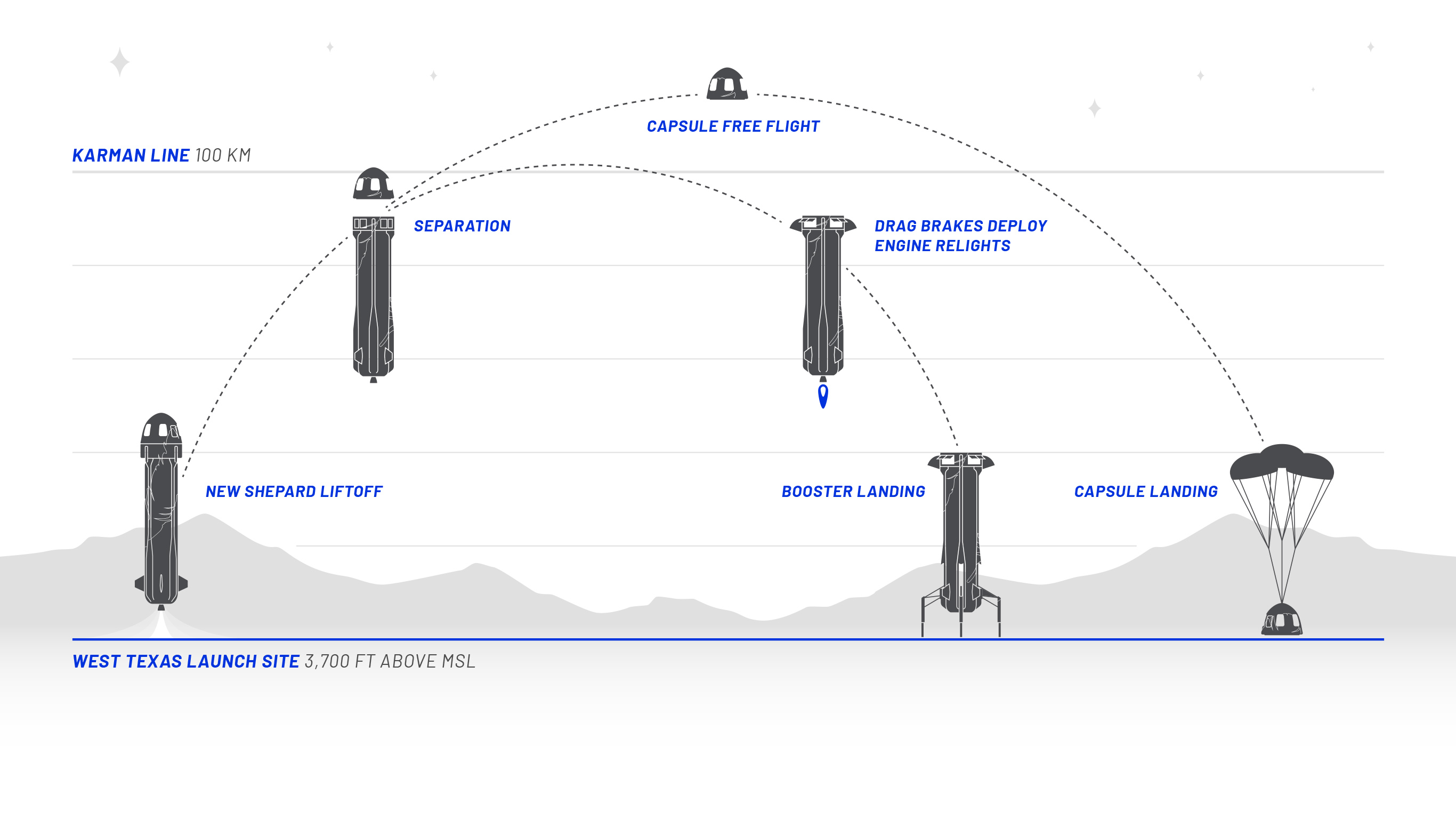Did you blow enough money on Uber to get Diamond status? A lot of users are finding out tonight as Uber rolls out its rider loyalty Rewards program to San Francisco and a slew of other cities. The feature calculates how much you’ve spent on Uber and Uber Eats in the last six months awards you perks like no-fee cancellations if you rebook, guaranteed prices between your two favorite spots, and free car upgrades. Uber confirms to TechCrunch that Rewards will roll out to the entire US soon but now is available in 25 places across the country.
Uber Rewards is still a bit complicated to be easy enough for everyone to quickly understand, but it does a could job of offering powerful perks and a way for everyone to earn $5 rebates. The program could discourage users from checking other ride hailing apps if their Uber’s ETA or price seems too high.
Meanwhile, Lyft’s loyalty program remains unseen. The competitor tried to steal the spotlight by announcing its own rewards system just two days before Uber, yet it seems like that was vaporware as it still hasn’t launched. Uber was far from first here, as Southeast Asia’s Grab has had rewards since 2016. But Uber could flex its deep pockets and cultural cache here by using slick product design to differentiate itself in a crowded market of lookalikes.
How To Use Uber Rewards
Luckily, almost everything in Uber Rewards happens automatically. All you have to do is look out for the invitation to join at the bottom of the home screen and activate it. You’ll then see your tier and the associated perks that you’ll get to keep for the next six months.
The only non-retroactive perk is the $5 credits you get for each 500 points you earn going forward. You get 1 point per dollar spent on UberPool, Express Pool and Uber Eats; 2 points on UberX, Uber XL and Uber Select; and 3 points on Uber Black and Black SUV. The one perk you have to configure yourself is if you’re platinum, you’ll have to choose which route to get price protection for. You probably want to pick your home and your most frequent destination or one of reasonable distance that you often travel to or from during rush hour.
Uber Rewards is now available in Boston, Dallas, Orange County, Houston, New Orleans, Kansas City, Indianapolis, LA, SF, Fort Collins, Rockies, Pittsburgh, Lehigh valley, Gettysburg, Erie, and Western Massachusetts. That’s on top of the launch cities of Miami, Denver, Tampa, New York, Washington, DC, Philadelphia, Atlanta, San Diego, and anywhere in New Jersey. Once Uber has nailed the experience in the US, it plans to roll it out to international locales.
Uber Rewards Levels
Now, here’s a breakdown of the Uber Rewards tiers, the best perks, and how much Ubering it takes to earn them (from our November post announcing the feature):
Blue: $5 credits
The only Uber perk that doesn’t reset at the end of a period is that you get $5 of Uber Cash for every 500 points earned regardless of membership level. “Even as a semi-frequent Uber Rewards member you’ll get these instant benefits,” Janakiram says. Blue lets you treat Uber like a video game where you’re trying to rack up points to earn an extra life. To earn 500 points, you’d need about 48 UberPool trips, 6 Uber Xs and 6 Uber Eats orders.

Gold: Flexible cancellations
Once you hit 500 points, you join Uber Gold and get flexible cancellations that refund your $5 cancellation fee if you rebook within 15 minutes, plus priority support Gold is for users who occasionally take Uber but stick to its more economical options. “The Gold level is all about being there when things aren’t going exactly right,” Janakiram explains. To earn 500 points in six months, you’d need to take about 2 UberPools per week, one Uber X per month and one Uber Eats order per month.

Platinum: Price protection
At 2,500 points you join Uber Platinum, which gets you the Gold benefits plus price protection on a route between two of your favorite places regardless of traffic or surge. And Platinum members get priority pickups at airports. To earn 2,500 points, you’d need to take UberX 4 times per week and order Uber Eats twice per month. It’s designed for the frequent user who might rely on Uber to get to work or play.

Diamond: Premium support & upgrades
At 7,500 points, you get the Gold and Platinum benefits plus premium support with a dedicated phone line and fast 24/7 responses from top customer service agents. You get complimentary upgrade surprises from UberX to Uber Black and other high-end cars. You’ll be paired with Uber’s highest-rated drivers. And you get no delivery fee on three Uber Eats orders every six months. Reaching 7,500 points would require UberX 8 times per week, Uber Eats once per week and Uber Black to the airport once per month. Diamond is meant usually for business travelers who get to expense their rides, or people who’d ditched car ownership for ridesharing.


